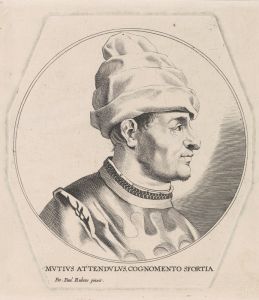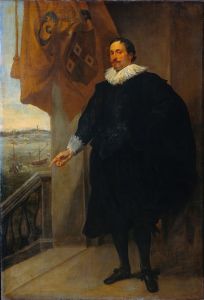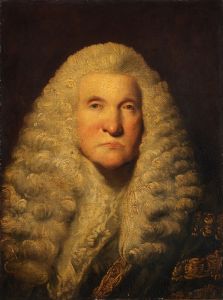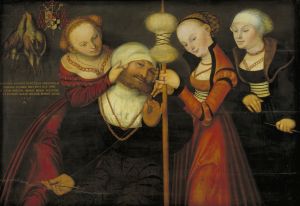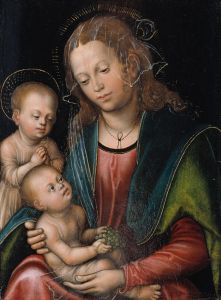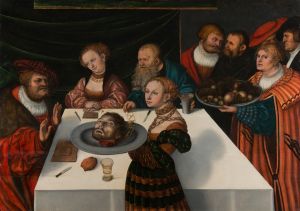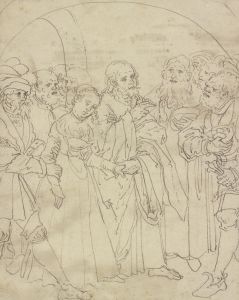
Portrait of a Man
A hand-painted replica of Lucas Cranach the Elder’s masterpiece Portrait of a Man, meticulously crafted by professional artists to capture the true essence of the original. Each piece is created with museum-quality canvas and rare mineral pigments, carefully painted by experienced artists with delicate brushstrokes and rich, layered colors to perfectly recreate the texture of the original artwork. Unlike machine-printed reproductions, this hand-painted version brings the painting to life, infused with the artist’s emotions and skill in every stroke. Whether for personal collection or home decoration, it instantly elevates the artistic atmosphere of any space.
"Portrait of a Man" is a painting by Lucas Cranach the Elder, a prominent German Renaissance artist known for his portraits, religious works, and mythological scenes. The painting is an example of Cranach's skill in capturing the individuality and character of his sitters, a hallmark of his portraiture. While the exact date of the painting is not definitively recorded, it is believed to have been created during the early to mid-16th century, a period when Cranach was at the height of his artistic career.
Lucas Cranach the Elder (1472–1553) was a court painter to the Electors of Saxony and a close associate of Martin Luther, the leader of the Protestant Reformation. His works often reflect the cultural and religious shifts of his time. Cranach's portraits, including "Portrait of a Man," are characterized by their meticulous attention to detail, rich color palette, and the use of soft, almost translucent lighting that enhances the sitter's features.
The subject of "Portrait of a Man" remains unidentified, as is common with many portraits from this era. The man is depicted in a three-quarter view, a popular compositional choice in Renaissance portraiture, which allows for a more dynamic representation of the sitter. He is dressed in attire typical of the period, suggesting a person of some social standing, though the lack of specific insignia or attributes makes it difficult to determine his exact identity or profession.
Cranach's technique in this painting demonstrates his mastery of oil on panel, a medium that was widely used during the Renaissance. The fine details in the man's facial features, such as the texture of his skin and the subtle shading around his eyes, showcase Cranach's ability to convey realism and personality. The background is typically plain or dark, a stylistic choice that draws attention to the sitter and emphasizes the contours of his face and clothing.
The painting is part of Cranach's extensive body of work, which includes numerous portraits of both prominent figures and anonymous individuals. His ability to capture the essence of his subjects made him one of the most sought-after portraitists of his time. Today, "Portrait of a Man" is housed in a museum or private collection, though its exact location may vary depending on exhibitions or ownership.
As with many works from the Renaissance, the painting has been studied for its artistic and historical significance. It provides insight into the fashion, culture, and artistic practices of 16th-century Germany, as well as Cranach's role in shaping the visual language of the period.






